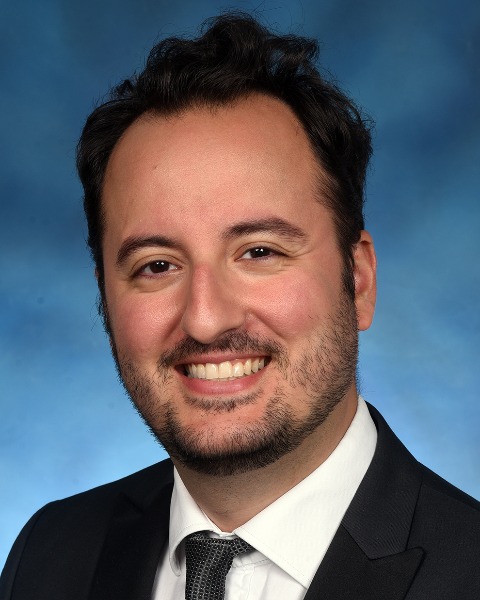Basic Science
Poster Session 1
(316) Spatial Placental PSG4 Gene Expression Profiling in Spontaneous Preterm Labor

Karl E. Seif, MD (he/him/his)
Assistant Professor of Obstetrics, Gynecology, and Reproductive Sciences - Division of Maternal Fetal Medicine
University of Maryland Medical Center
Baltimore, MD, United States
Mary Mangione, MD
University of Maryland Medical Center
Baltimore, MD, United States- JL
Jun Lei, MD, PhD
University of Maryland Medical Center
Baltimore, MD, United States - AC
Ashley Cellini, N/A
University of Maryland Medical Center
Baltimore, MD, United States - ST
Sifa Turan, MD, RDMS
University of Maryland Medical Center
Baltimore, MD, United States - PY
Peixin Yang, PhD
University of Maryland Medical Center
Baltimore, MD, United States 
Irina Burd, MD, PhD (she/her/hers)
Professor and Chair
University of Maryland
Baltimore, MD, United States- BW
BingBing Wang, PhD
University of Maryland Medical Center
Baltimore, MD, United States
Primary & Presenting Author(s)
Coauthor(s)
A better understanding of the biology of spontaneous preterm labor (SPTL) could help elucidate new treatments. Accelerated placental senescence (PS) is known to cause certain obstetrical complications, but studies have not clearly demonstrated a relationship between accelerated PS and SPTL. Recently, Pregnancy Specific Beta-1-Glycoprotein 4 (PSG4) has been found to be a potent molecular driver for PS. Our hypothesis is that PSG4 is overexpressed in chorionic villi of SPTL placenta samples compared to those at full term (FT) and may represent one of the key players of SPTL.
Study Design: Post-partum placental samples were collected from 18 to 45 year old patients who delivered at a single medical center between 2021 and 2022. Exclusion criteria included multiple gestations, fetal structural anomalies and aneuploidies, and presence of maternal hypertension or diabetes, infectious diseases including COVID-19, and autoimmune diseases. PSG4 RNA in-situ hybridization was then conducted in formalin-fixed paraffin-embedded slides with the use of the RNAScope for Multiplex Fluorescent Reagent Kit v2. RNA expression was then quantified using QuPath software. The mean mRNA signal counts/cell were then obtained and compared between SPTL and FT samples.
Results:
40 samples met inclusion criteria. 31 (77.5%) were SPTL placentas, and 9 (22.5%) were FT controls. The mean PSG4 mRNA signal counts/cell in the SPTL samples was 7.1 ± 4.5 compared to 0.6 ± 0.3 in the FT samples (p< 0.05). Of the SPTL placentas, 21 (68%) were < 34 weeks, 10 (32%) were 34-37 weeks. The mean PSG4 mRNA signal counts/cell was not different in those 2 subgroups: 7.5 ± 4.7 v. 6.4 ± 4.1, p=0.49 (Figure 1). PSG4 mRNA signals were predominantly detected in syncytiotrophoblast as well as the discontinuous monolayer of cytotrophoblast.
Conclusion: PSG4, a known potent molecular driver of PS, is over-expressed in SPTL placentas compared to FT placentas. Thus, accelerated PS may play an important role in the pathophysiology of SPTL and may serve in the future as a target for novel therapeutics.

